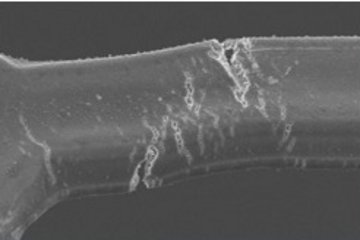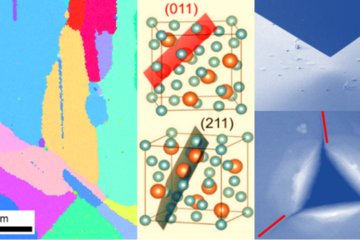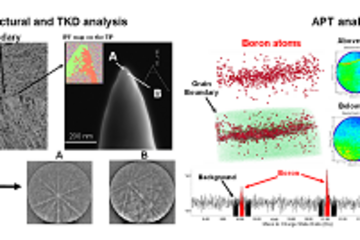All genres
561.
Talk
Influence of the field evaporation conditions on compositional analysis of titanium deuteride. Atom Probe Tomography and Microscopy 2018 , Gaitherburg, MD, USA (2018)
562.
Talk
The Role of Atom Probe Tomography on the Development of the Next Generation of High Performance Materials. 4th International Congress on 3D Materials Science (3DMS 2018), Helsingᴓr (Elsinore), Denmark (2018)
563.
Talk
Calibration of Atom Probe Tomography Reconstructions from Correlation with Electron Tomograms or Micrographs. APT&M 2018, NIST, Gaithersburg, MD, USA (2018)
564.
Talk
An automated computational approach for extraction in-plane compositional information of interface in atom probe tomography dataset. APT&M 2018 conference, Gaitherburg, MD, USA (2018)
565.
Talk
Correlative transmission Kikuchi diffraction and atom probe tomography analysis of grain boundaries in Cu(In,Ga) Se2 and CuInS2. E-MRS Spring Meeting 2018, Strasbourg, France (2018)
566.
Talk
Correlative transmission Kikuchi diffraction and atom probe tomography analysis of grain boundaries in Cu(In,Ga) Se2 and CuInS2 in thin film solar cells. APT&M 2018, NIST, Gaithersburg, MD, USA (2018)
567.
Talk
Chemo-Mechanics in Metallic Alloys. 16th Edition of the European Mechanics of Material Conference, Nantes, France (2018)
568.
Talk
Observing Solute Hydrogen and Hydride in Ti alloys by Atom Probe Tomography. TMS 2018, 147th Annual Conference, Phoenix, AZ, USA (2018)
569.
Talk
Direct Observation of Hydrogen in Ti Alloys by Atom Probe Tomography. TMS 2018 Annual Meeting & Exhibition, Phoenix, AZ, USA (2018)
570.
Talk
Segregations at defects and interfaces and their relations to properties. TMS 2018, annual Meeting & Exhibition, Phoenix, AZ, USA (2018)
571.
Talk
The role of systematic characterization on the development of new nickel-based superalloys. Industrial Colloquium - SFB/TR 103 „From Atoms to Turbine Blades“ , Fürth, Germany (2018)
572.
Talk
Precipitation of CFCC-TmC Carbides during Tempering at 450°C of a Medium Mn Steel: A Thermodynamic and Kinetic Study Followed by Atom Probe Tomography. TMS 2018 Annual Meeting & Exhibition, Phoenix, AZ, USA (2018)
573.
Talk
Physical Metallurgy of Segregation and Austenite Reversion in Medium Mn Steels. TMS 2018 Annual Meeting & Exhibition, Phoenix, AZ, USA (2018)
574.
Talk
Unusual interstitial strengthening of high-entropy alloys evading the strength-ductility trade-off. TMS 2018 Annual Meeting & Exhibition, Phoenix, AZ, USA (2018)
575.
Talk
Segregation assisted grain boundary precipitation in a model Al–Zn–Mg–Cu alloy. TMS 2018 Annual Meeting & Exhibition, Phoenix, AZ, USA (2018)
576.
Talk
Spinodal decomposition and periodic segregation in grain boundaries on Al alloy. TMS 2018 Annual Meeting & Exhibition, Phoenix, AZ, USA (2018)
577.
Talk
Microstructure evolution of Ag-alloyed PbTe for thermoelectric power generation. 18th Israel Materials Engineering Conference (IMEC-18), Dead Sea, Israel (2018)
578.
Talk
From systematic characterisation to the next generation of high performance materials. THERMEC 2018 , Paris, France (2018)
579.
Talk
Seeing atoms in biological materials: a new frontier for atomic-scale tomography. Volkswagen Stifung Symposium, Bremen, Germany (2018)
580.
Talk
Textures Studied at Near Atomic-Scale. 18th International Conference on Textures of Materials (ICOTOM-18), St. George, UT, USA (2017)











